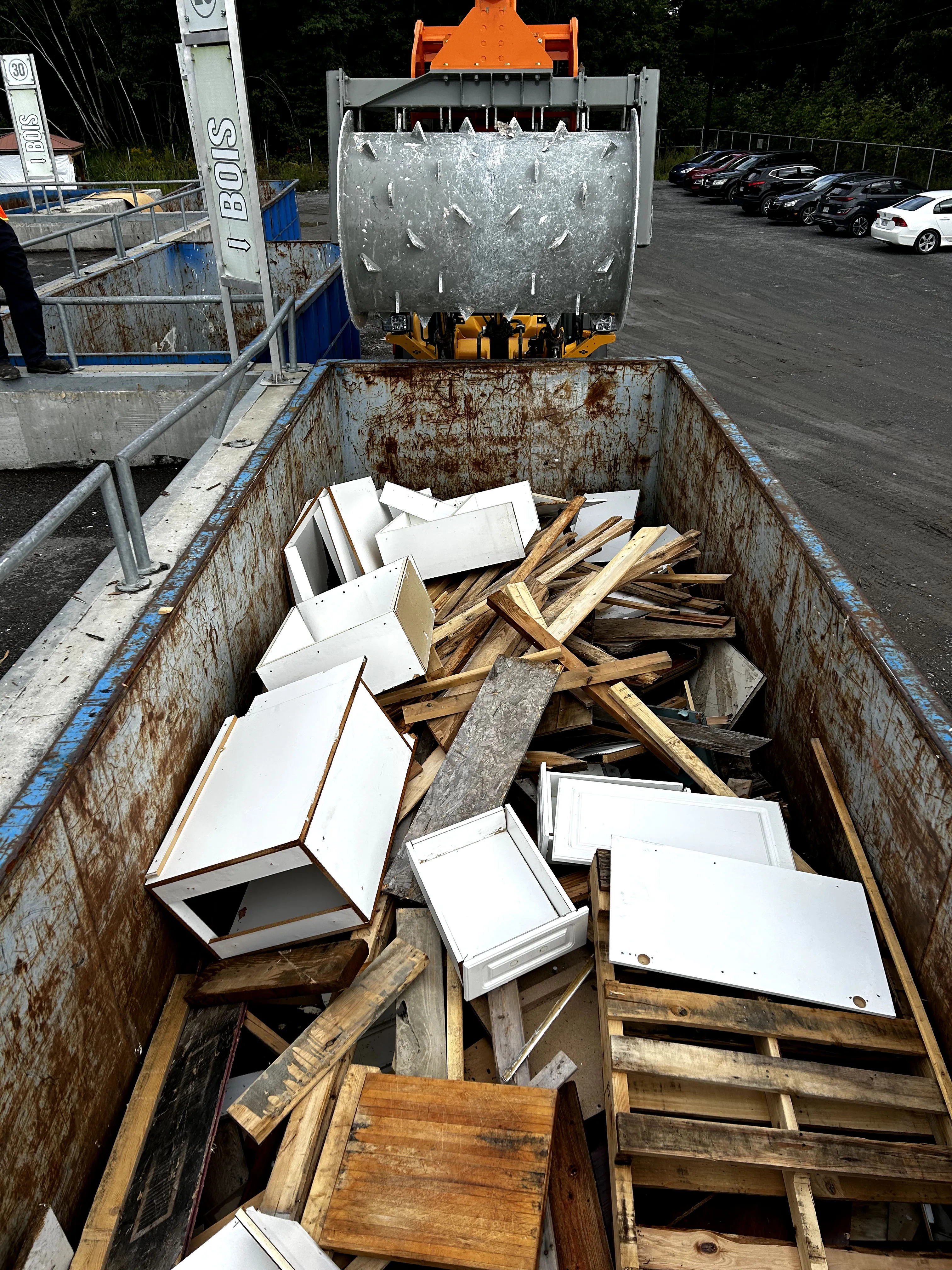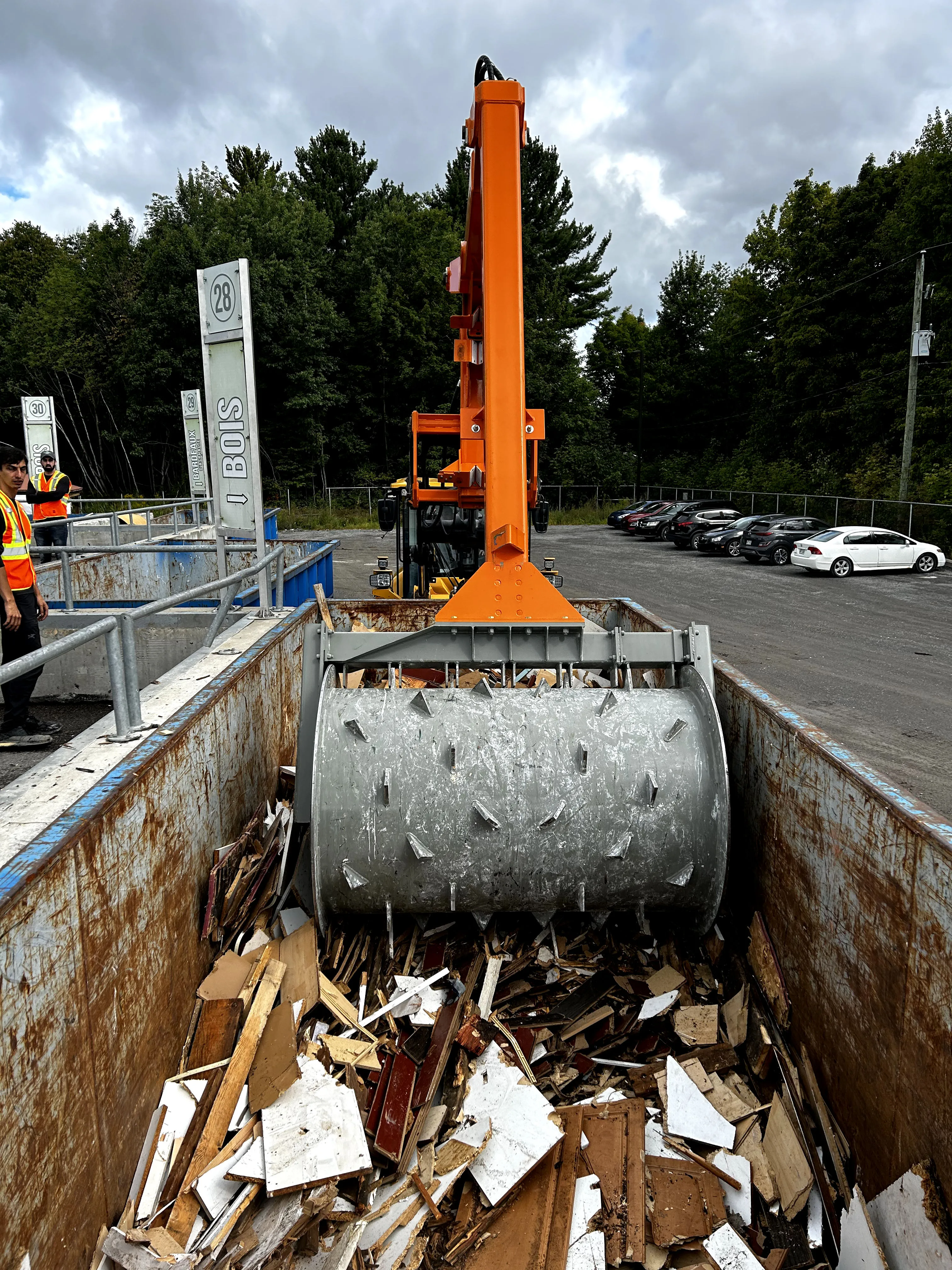Operation
Rack modification - Storage position
1. Remove the long-distance transport stopper.
2. Place the storage stopper in the designated slot.
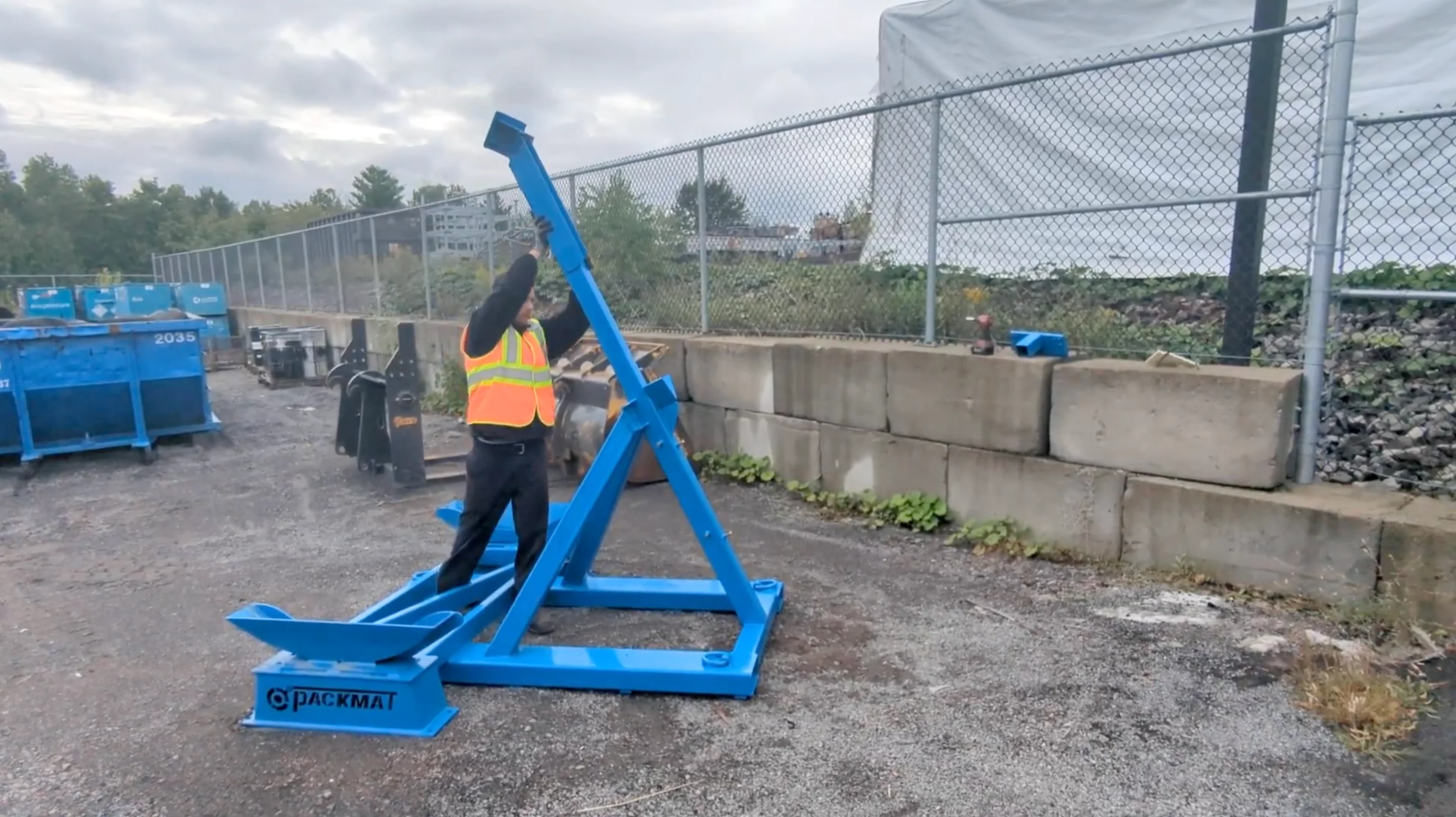
3. Screw the storage stopper firmly using the provided screws to ensure solid support.
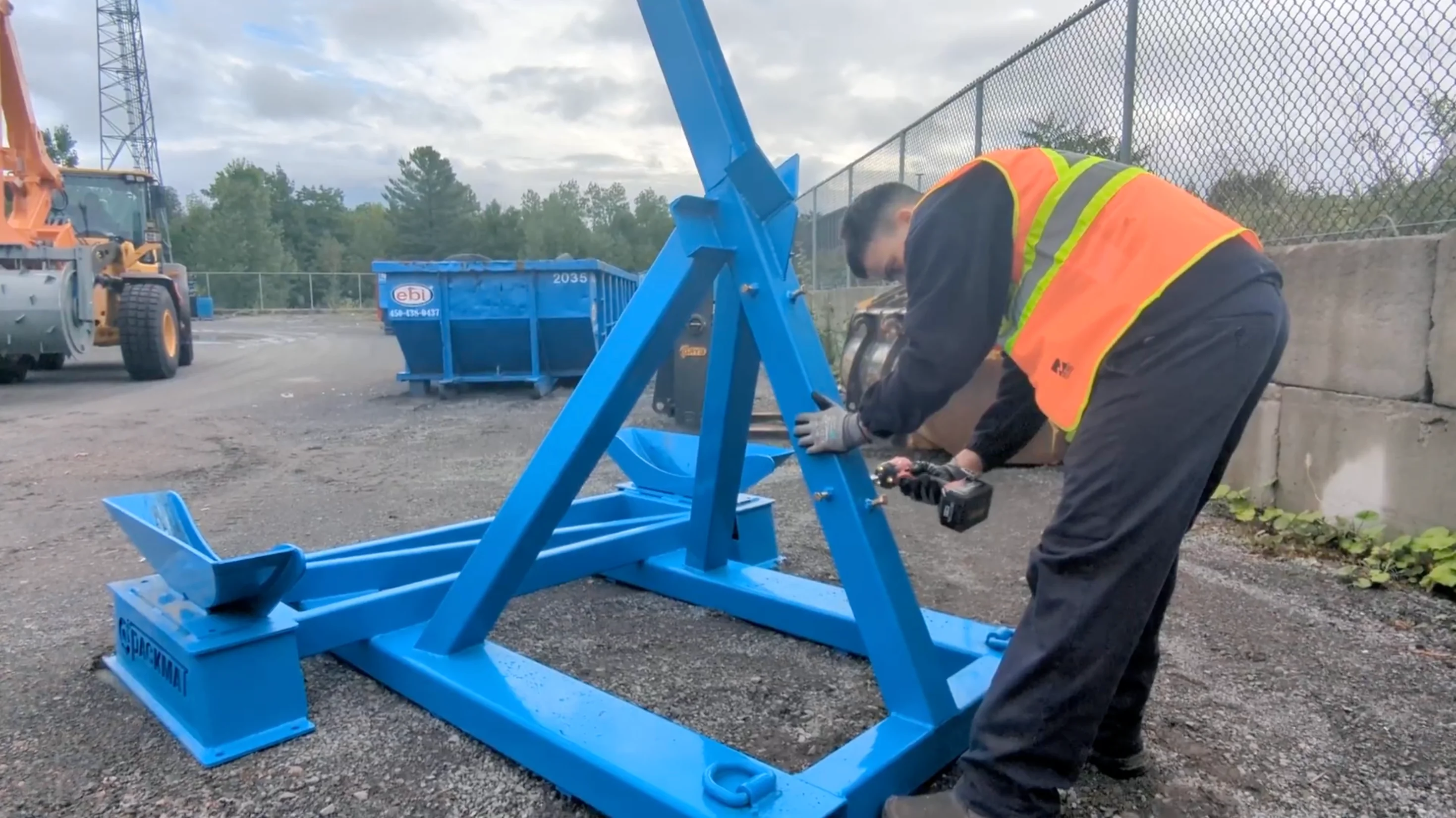
Storing the machine - Storage mode
1. Place the roller into the rack plate by tilting the rocker forward.
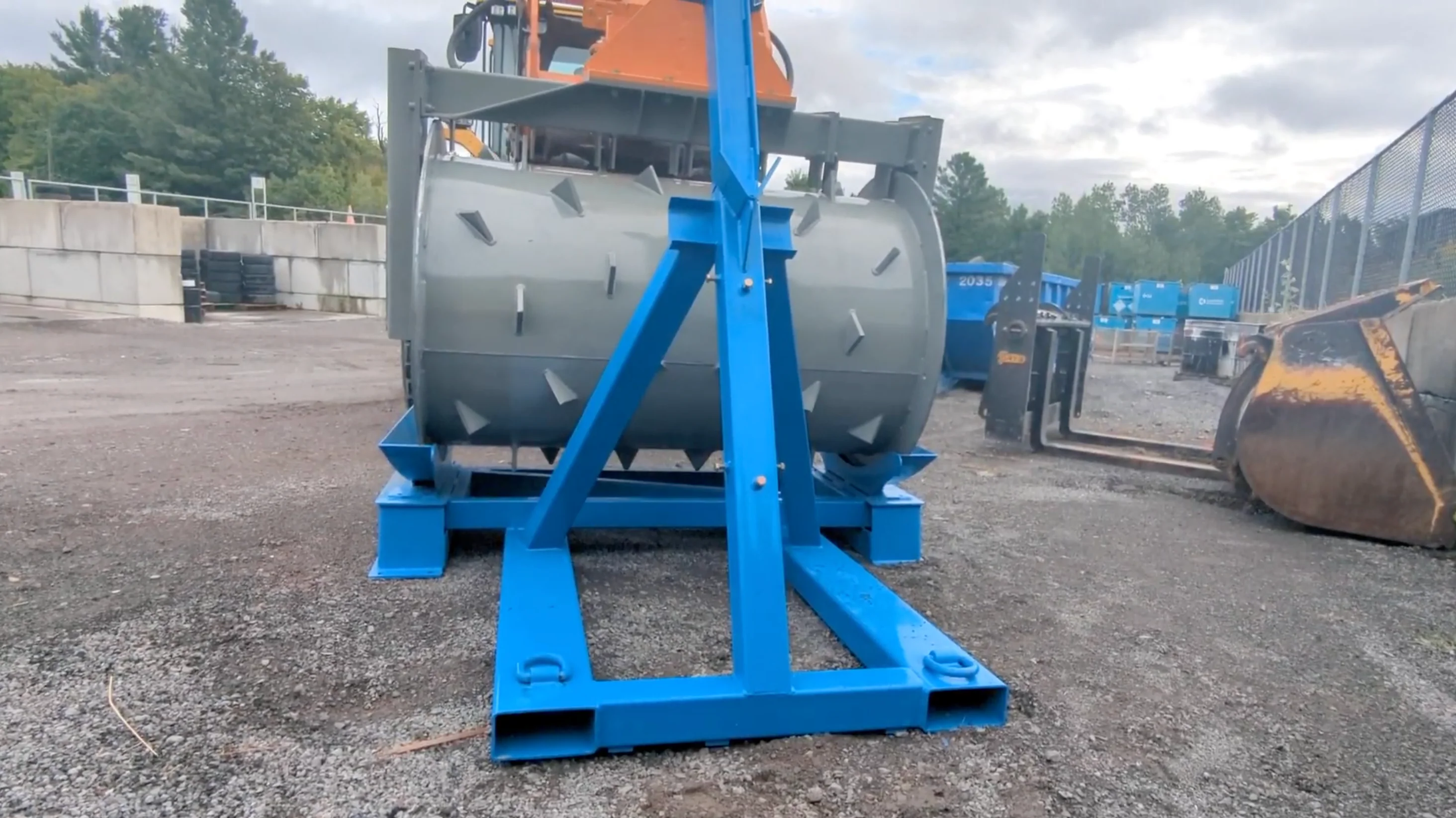
2. Lower the boom to ground level. Disconnect the hydraulic quick connects.
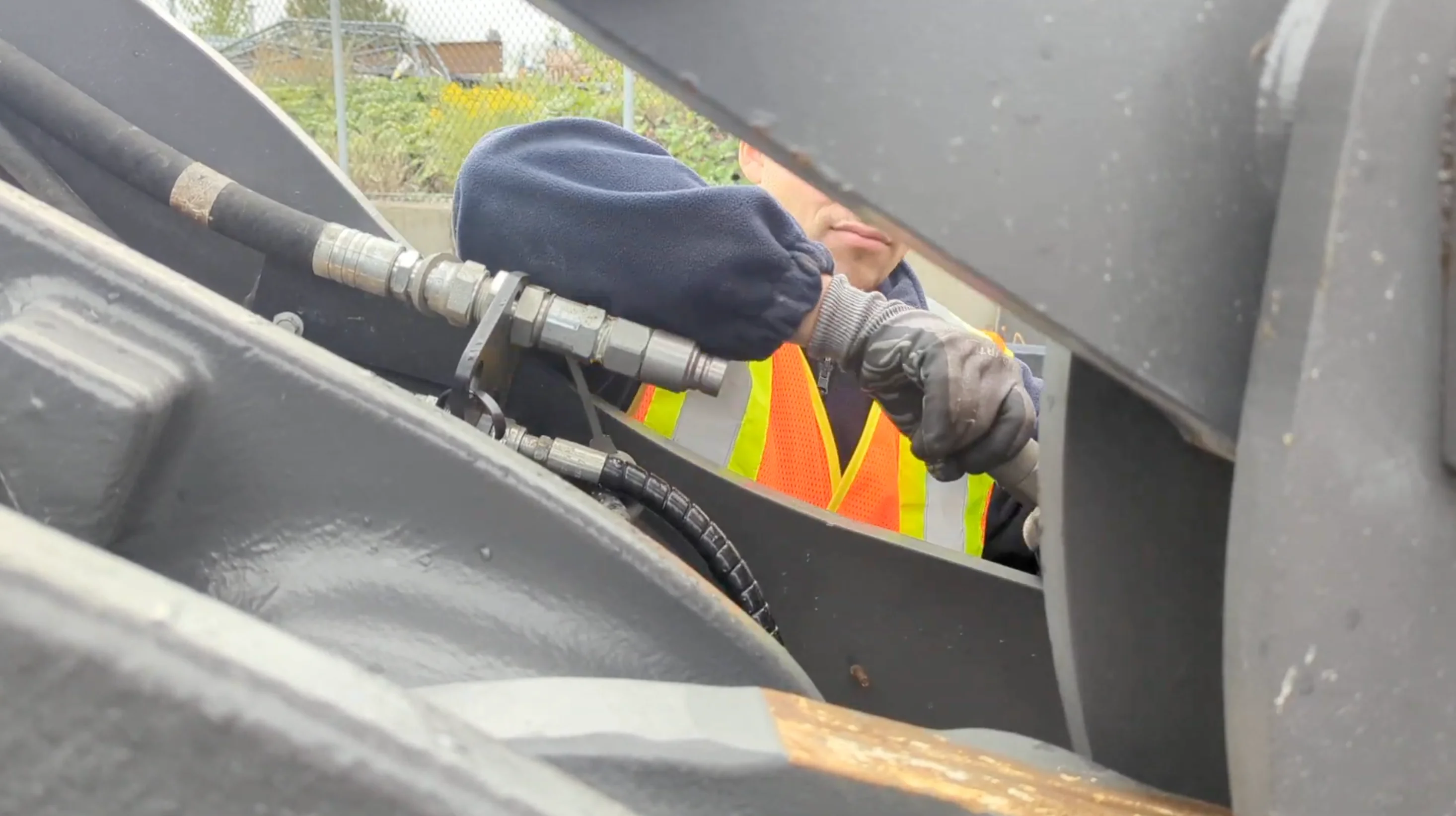
3. Place the hydraulic hoses in the designated slot in the frame.
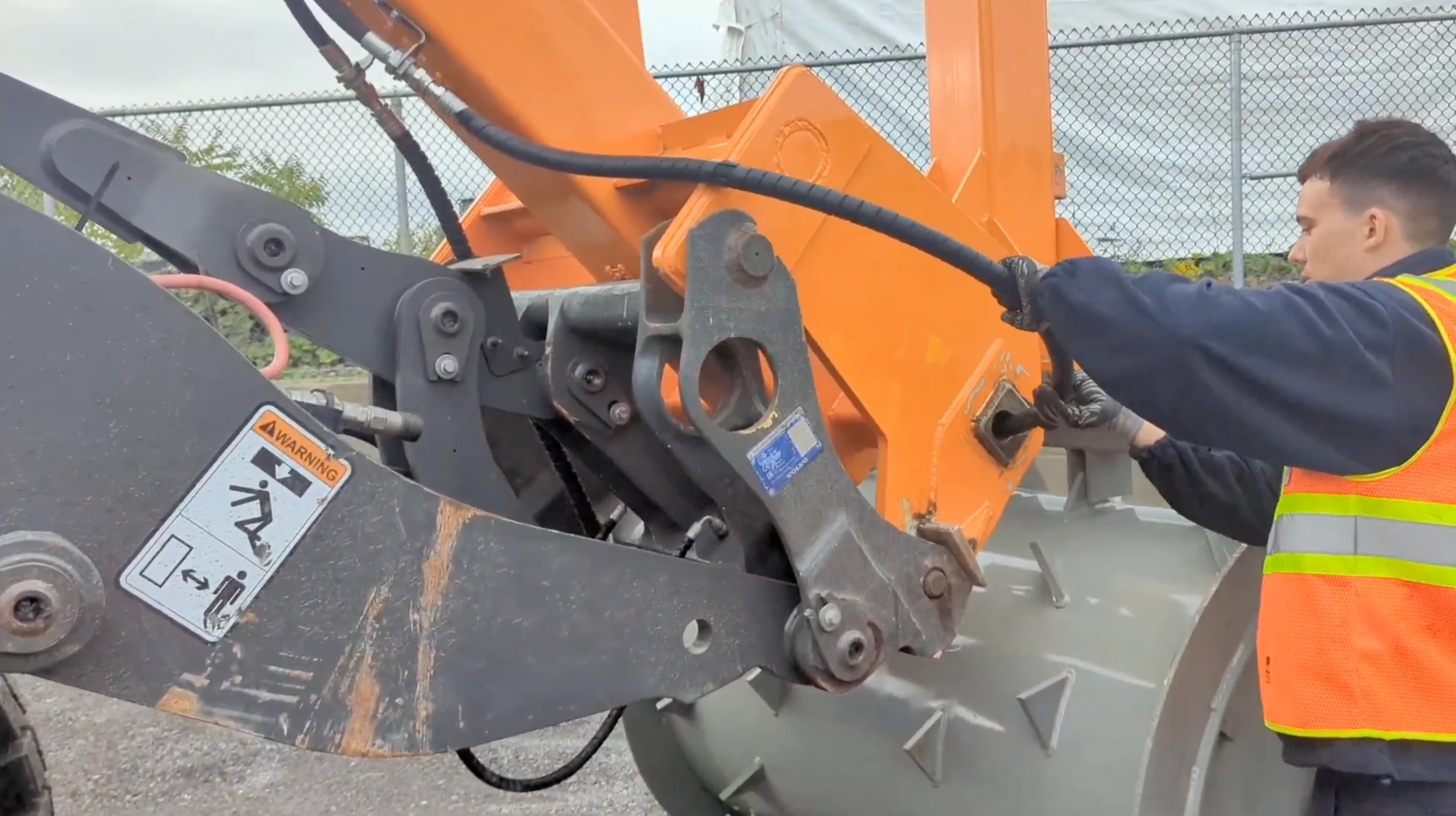
4. Raise the boom.
5. Tilt forward and make sure the frame remains above the roller arm.
6. Move forward and tilt down to press the roller arm into its position.
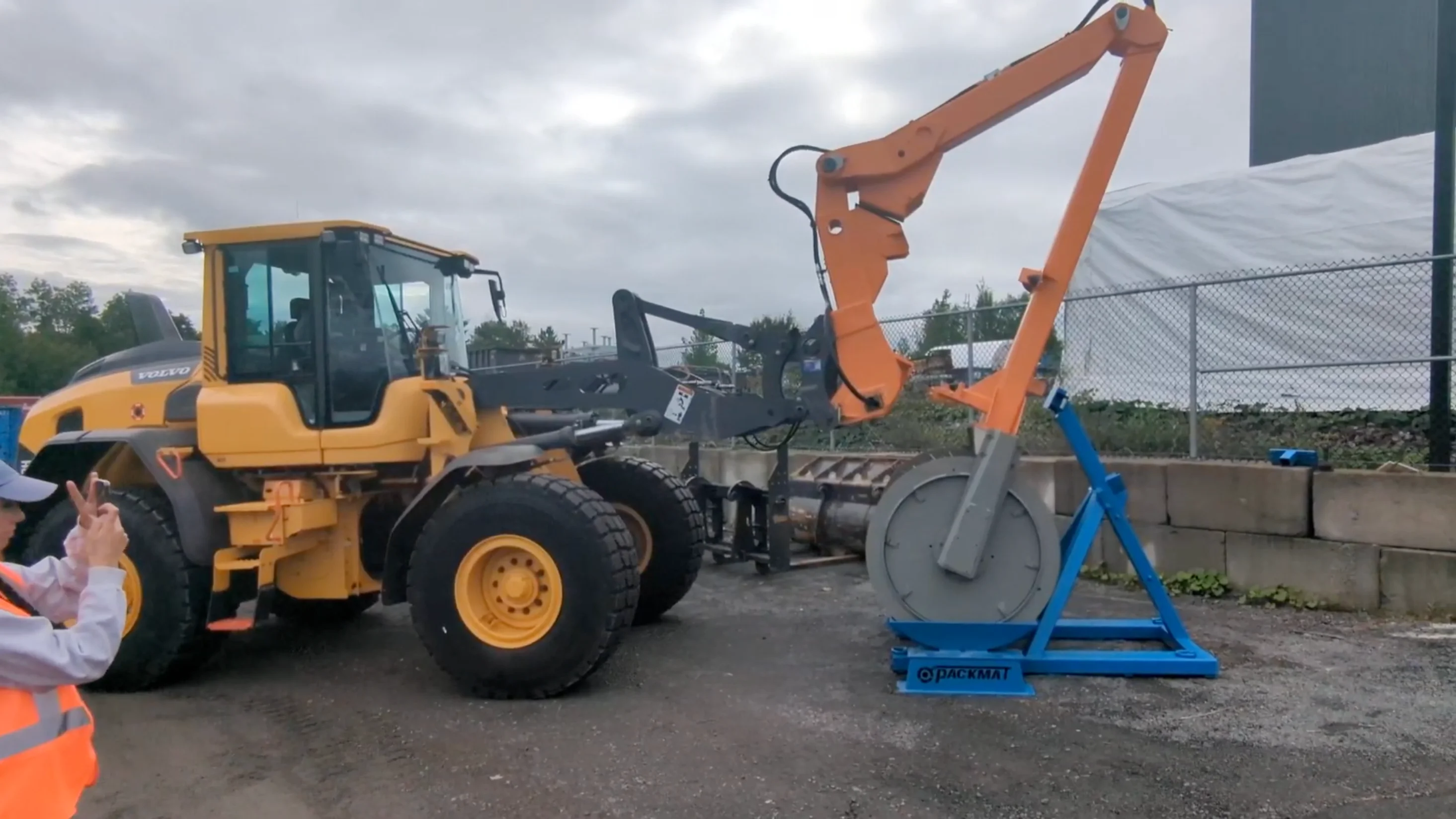
7. Remove the lower pins from the quick attach.
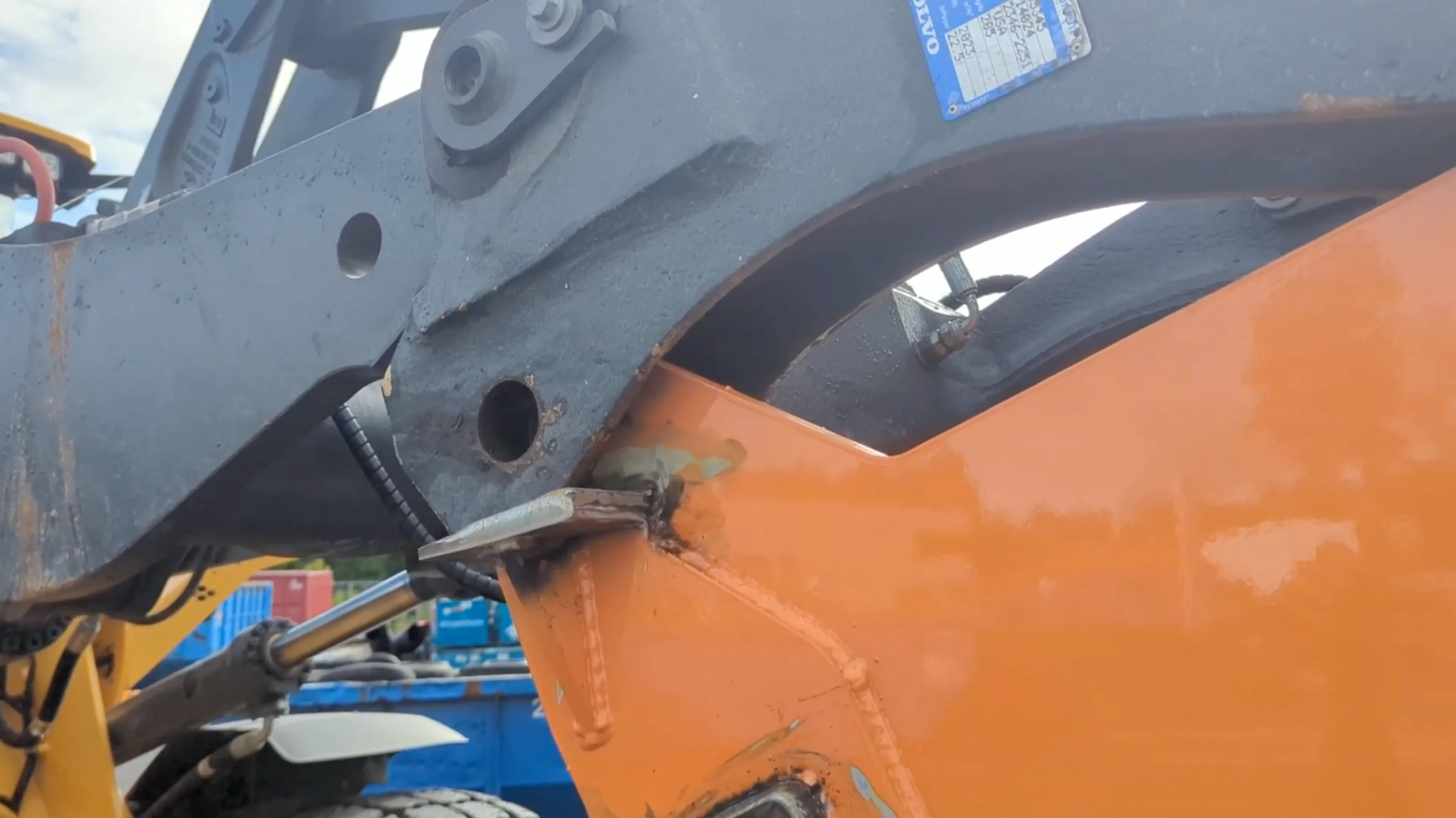
8. Lower the boom so both parts rest against each other.
9. Put the vehicle in neutral. Carefully move out while progressively tilting the rocker forward.
10. On level ground, the loader will back out by itself.
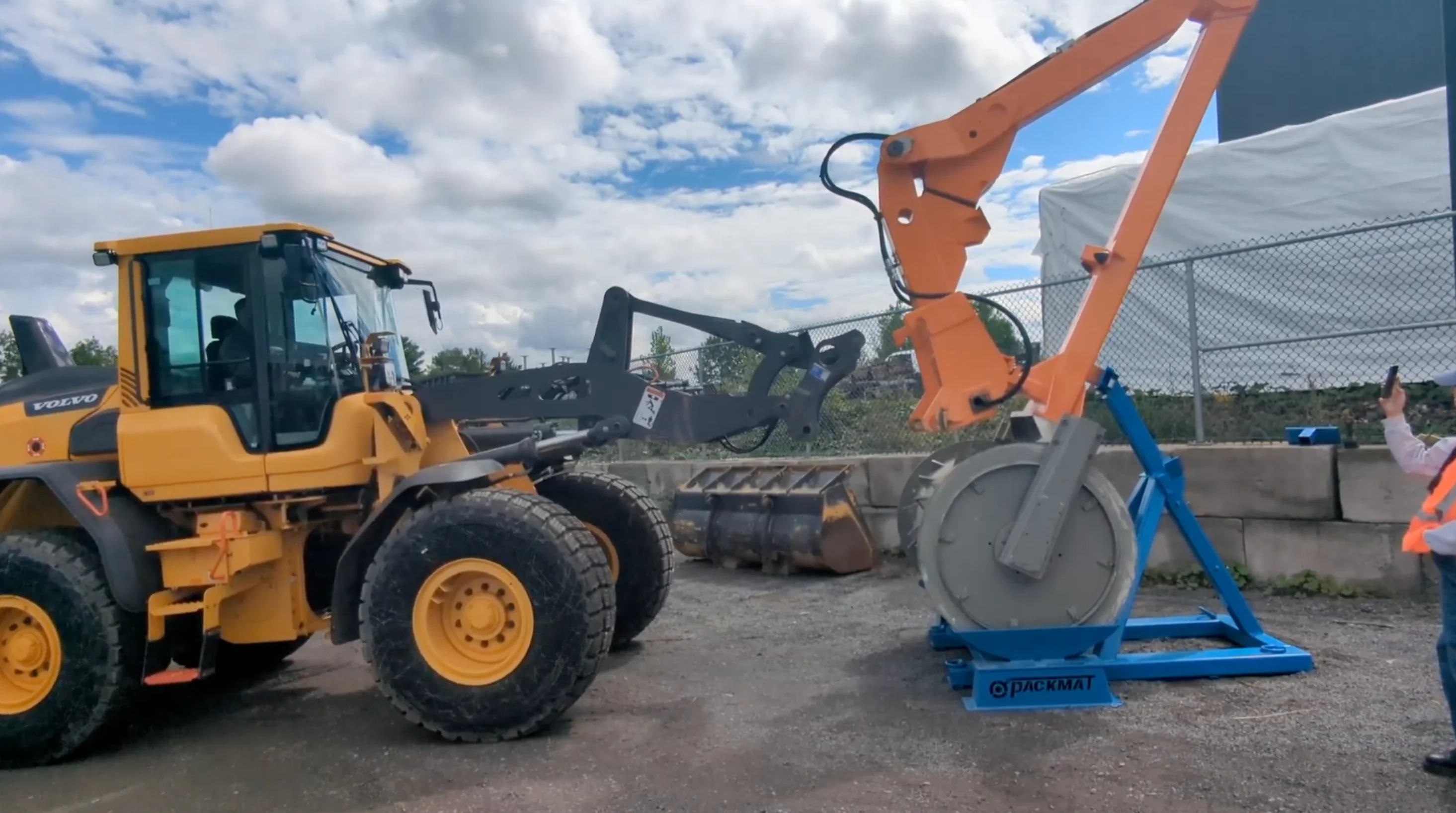
Moving the rack - Short distance transport
1. Put a transport strap in place, using one of the two recommended positions for short-distance transport.



2. Use the loader forks to lift the assembly (rack and PK707).
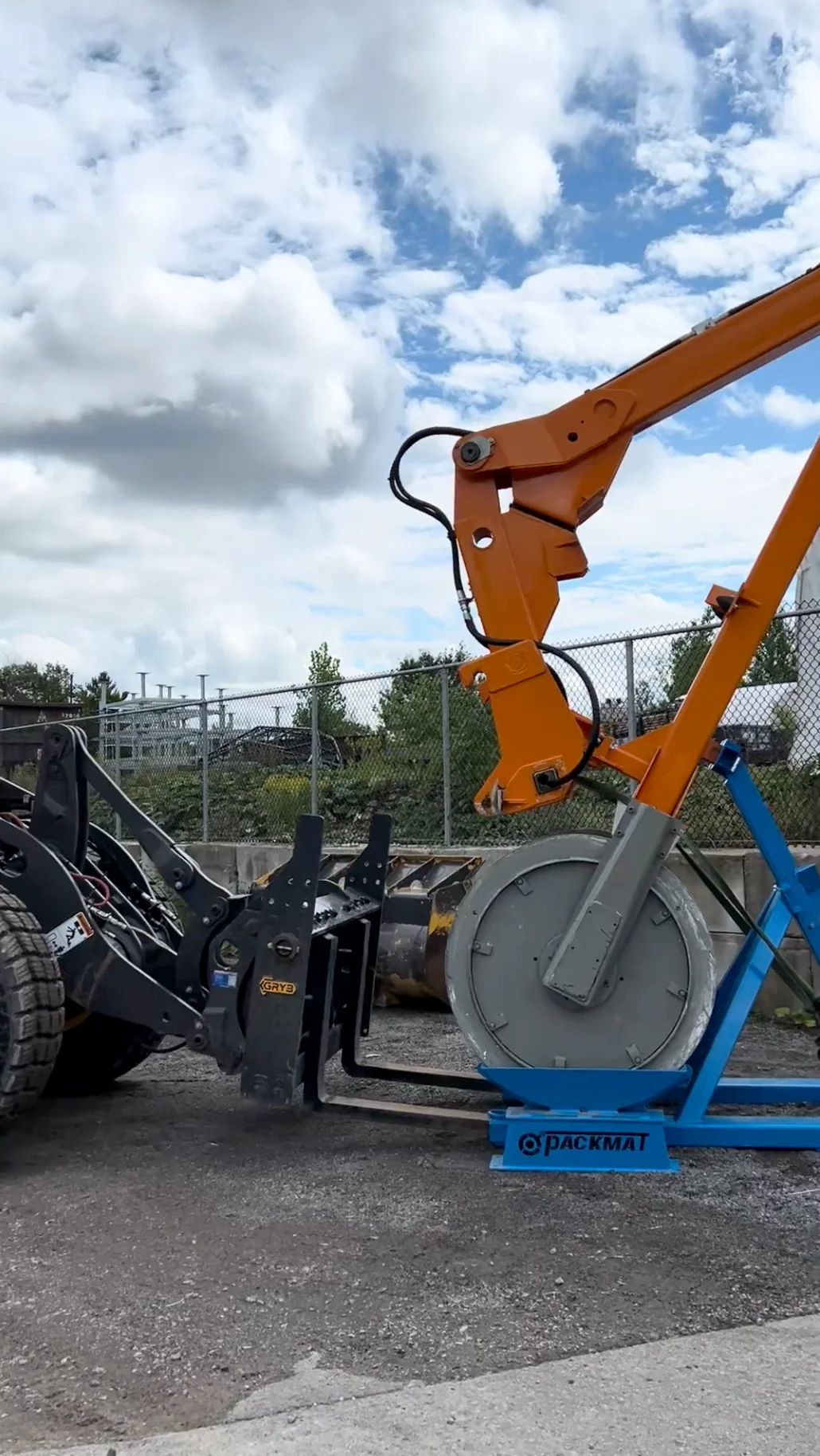
3. Use the loader forks to lift the assembly (rack and PK707).
4. Move it to the desired location.
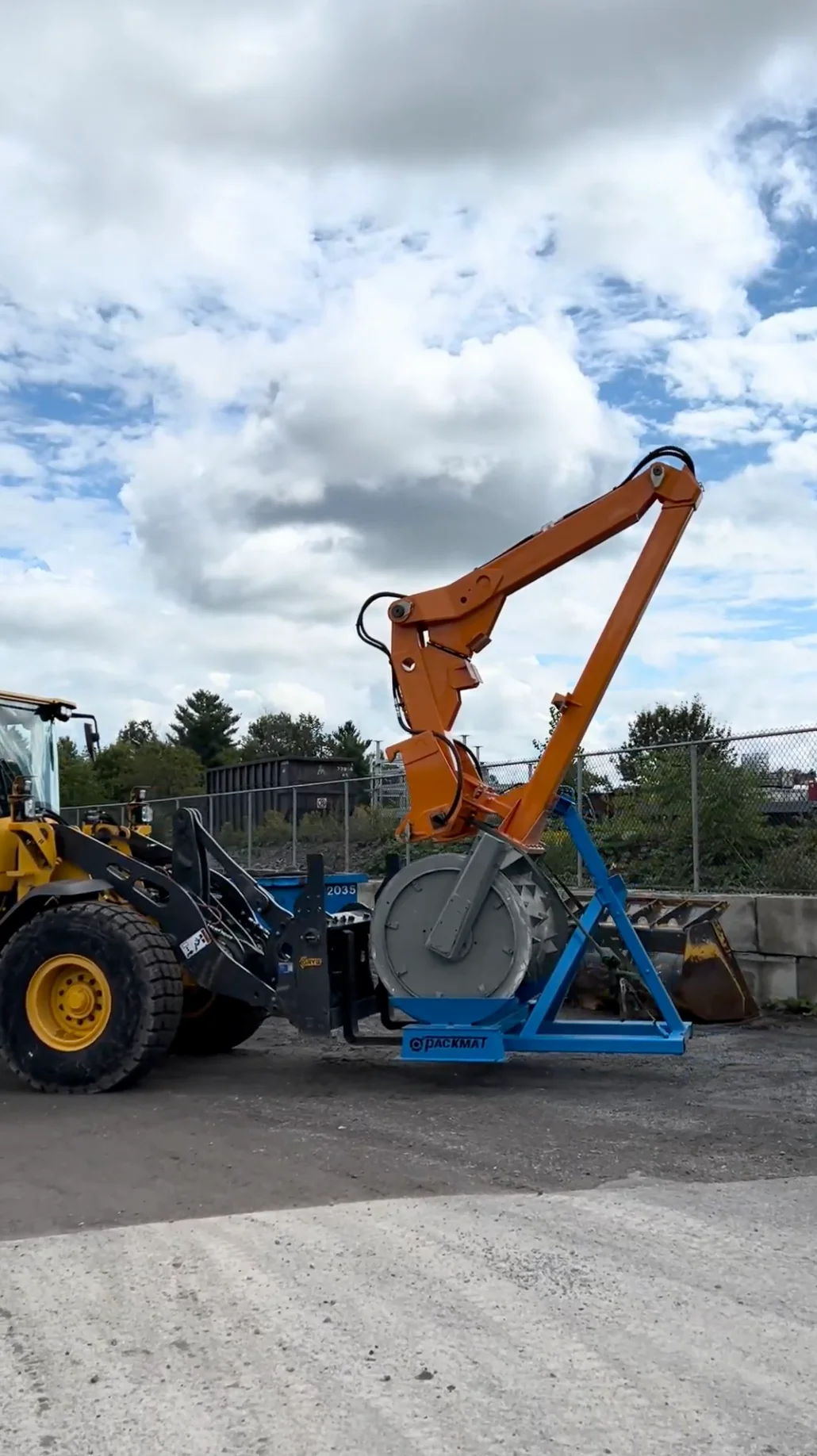
5. Remove the transport strap once the rack is positioned.
6. Use the PK707 according to the operation instructions.
Taking the PK707 from storage position
1. Tilt the rocker fully forward.

2. Engage the quick attach upper part under the hooks.

3. Then tilt the rocker backward.
4. Once the PK707 starts to move, stop.
5. Insert and lock the quick attach pins.
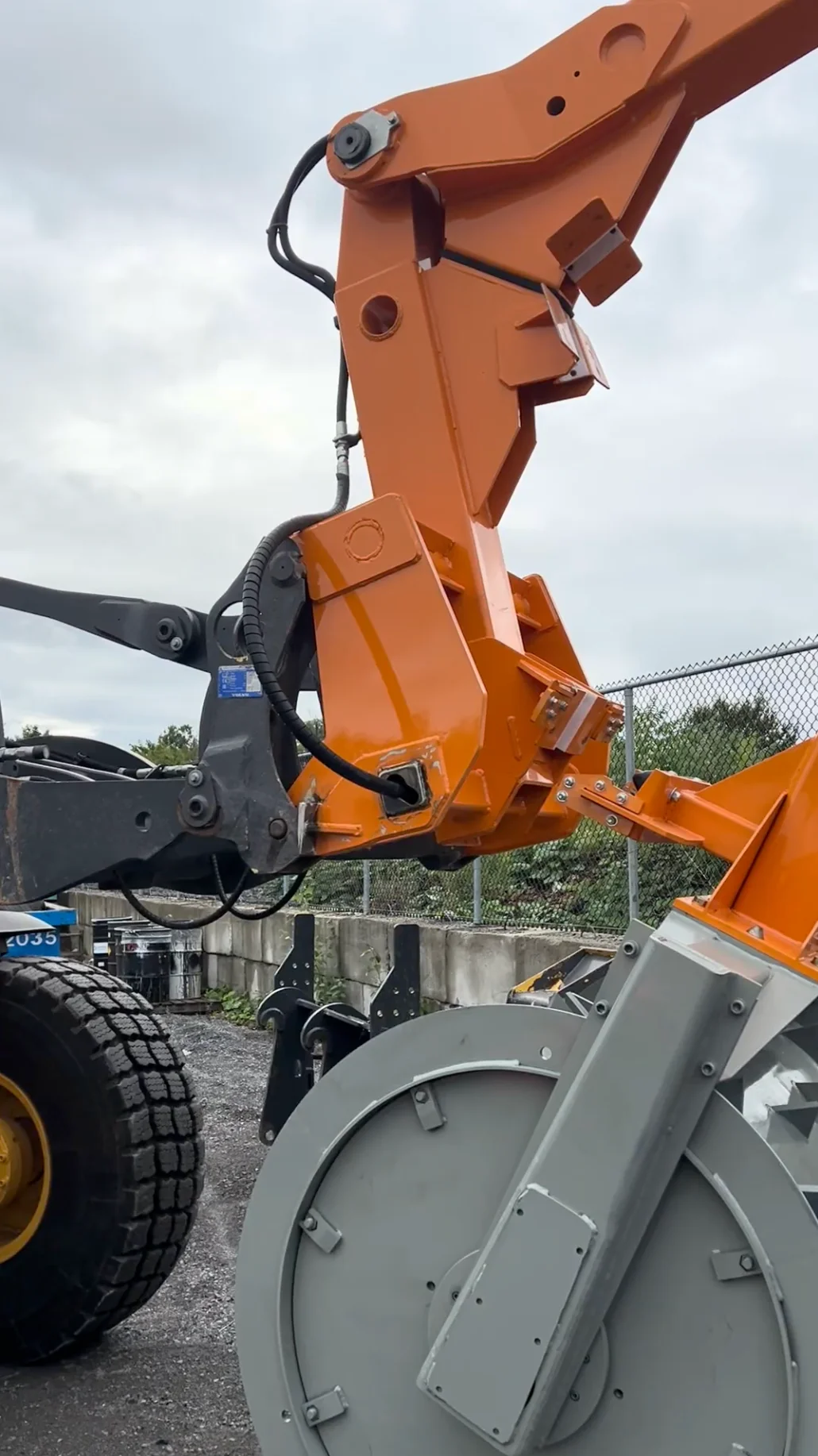
6. Tilt the rocker backward while slowly reversing with the loader, until the roller arm reaches a vertical position.

7. Keep the arm as vertical as possible until it is completely detached from the ground.
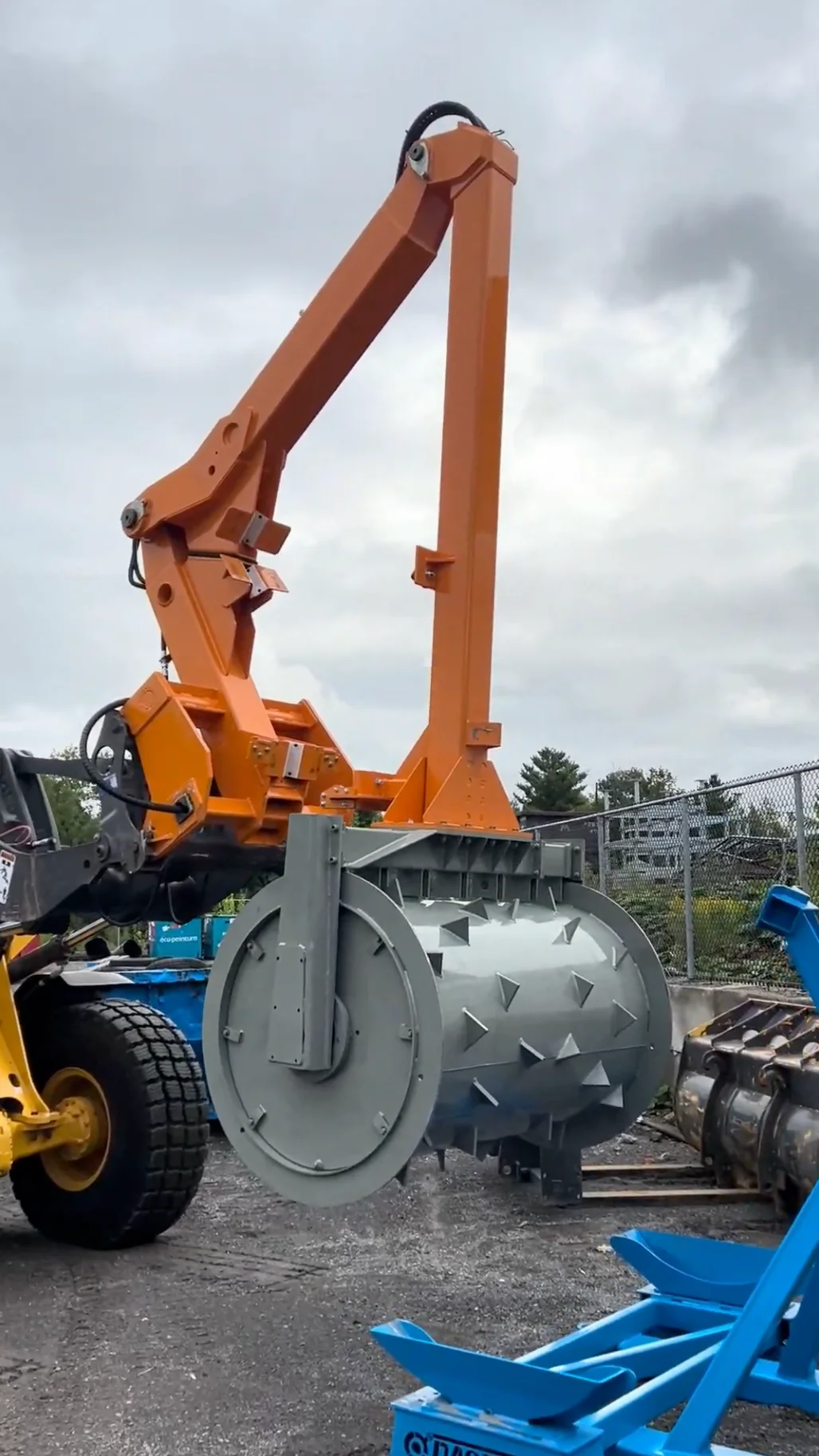
8. Then tilt the rocker fully backward so that all arms are pressed together.
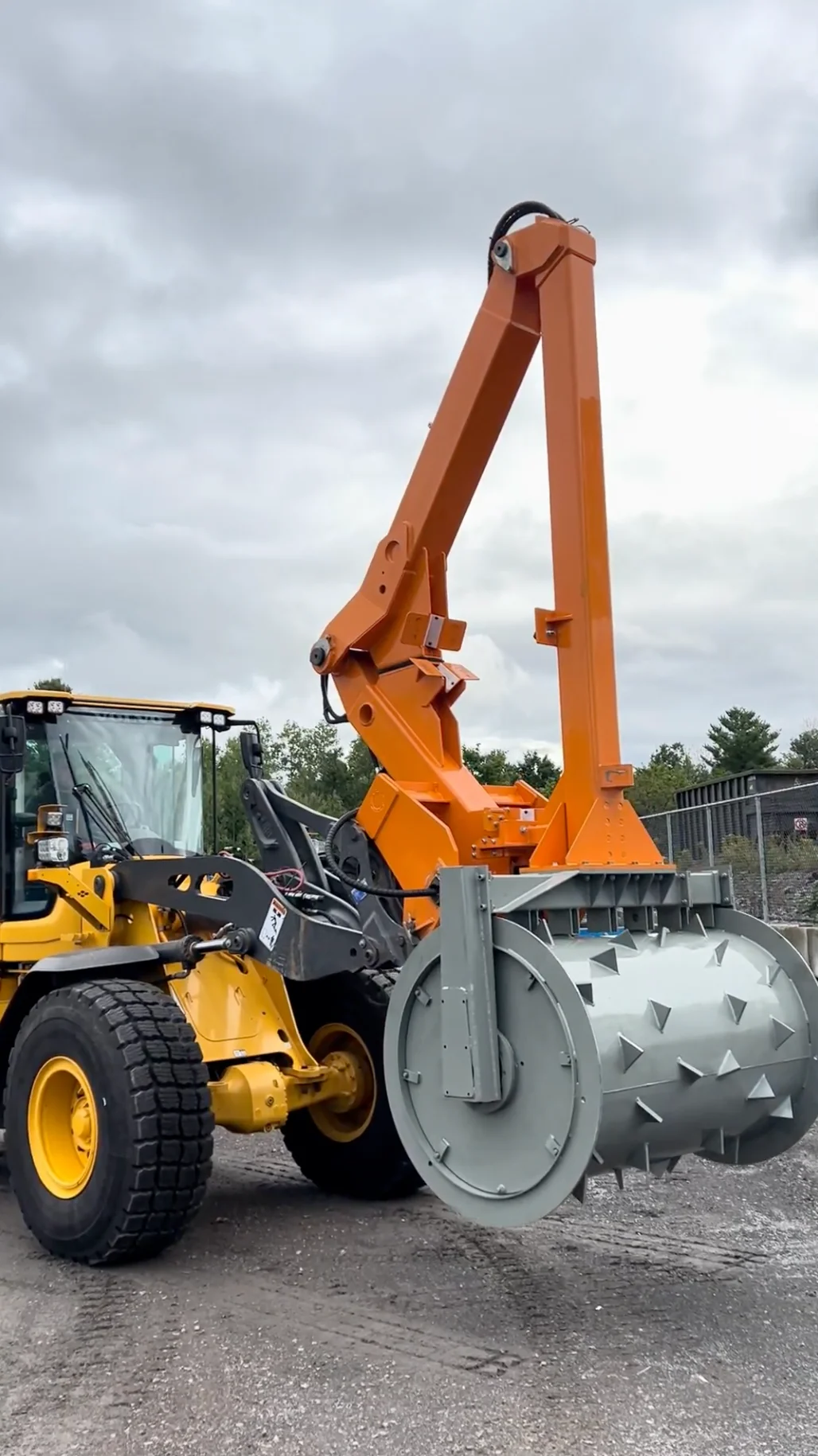
Best practices for compaction
1. Never turn the loader steering wheel when the roller is inside a container. This action puts excessive pressure on the pivot shafts and may bend or damage them.


2. Never exceed 1300 RPM with the loader, to avoid overloading the roller hydraulics. Otherwise, the components may overheat or wear prematurely.
3. Maximum hydraulic system pressure: 3000 psi
4. Do not strike the container walls with the roller, as this can cause unnecessary damage to the containers.
Compaction technique
- Send the roller into the bin.
- Tilt down to put pressure on the material and then use the accessory function to roll back and forth to compact the material.
- Adjust the tilt and the height of the loader boom to add or release pressure on the roller.
- It is possible to shred the waste by spinning the roller slightly in place, in addition to compacting it.
- Pull the waste toward you by reversing slightly with the loader to create a mound. The roller can then shred the waste and use momentum to climb back up.


- Do not create too large a mound, as the roller may not be able to climb it on its own and will require additional loader actions.
- Move the waste toward the rear of the container.
- Lighten the roller and spin it quickly while unloaded. Then gradually lower the roller to let it drop at the desired spot. This technique helps to move and redistribute waste inside the bin.
